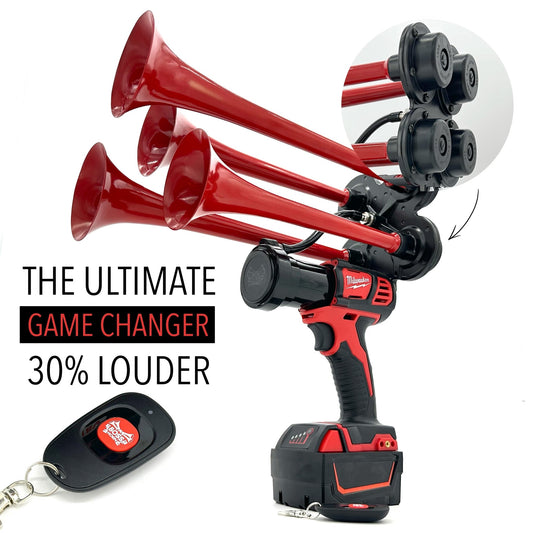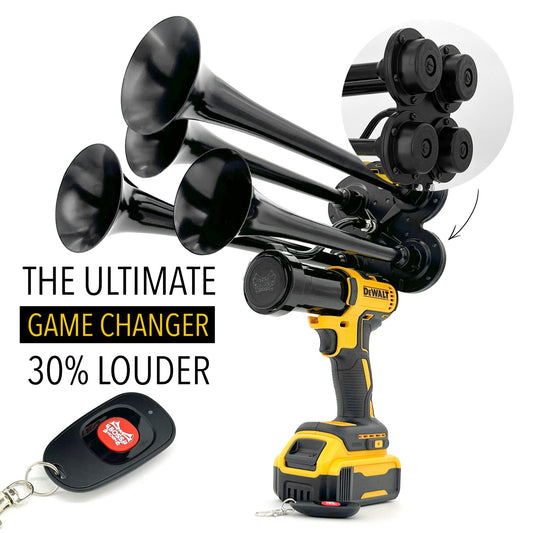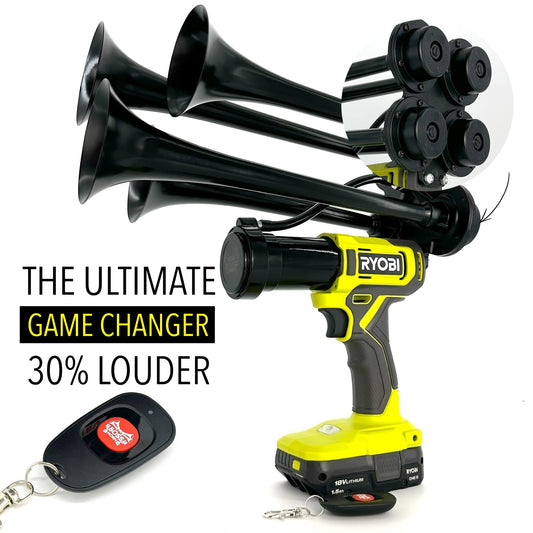Did you know that car horns have been around since the early 1900s? These devices were first introduced as a safety feature to warn pedestrians and other drivers of a vehicle's presence. Over the years, car horns have become an essential part of road safety and communication.
With the advancement of automotive technology, car horns have evolved to be more reliable and efficient. Modern car horns are powered by an electrical system, which requires a fuse to protect against electrical overloads. Fuses act as a safeguard by interrupting the current flow when there is an excessive amount of electricity passing through the system.
If you've ever had the unfortunate experience of your car horn suddenly not working, you're not alone. Many drivers have faced this frustrating issue at some point. The most common and often simple solution is to check the fuse responsible for the car horn.
Fuses are small devices that are designed to break or "blow" when there is a surge of electricity, preventing damage to the electrical components in a vehicle. Each fuse in a car's fuse box is assigned to a specific circuit, including the car horn. By locating and inspecting the fuse related to the horn circuit, you can determine if it needs to be replaced.
It's worth noting that different vehicles may have their fuses located in various areas. Some cars have a dedicated fuse box specifically for the horn, while others may share a fuse with other components like the airbag or cigarette lighter. To identify the correct fuse for the car horn, consulting the vehicle's manual or fuse box diagram is recommended.
Regular maintenance of your car's electrical system, including checking the fuses, can help avoid unexpected issues with the car horn. If you discover that the fuse for the car horn has blown, replacing it with a new one of the same amperage rating should restore the functionality of the horn.
Remember, a working car horn is crucial for your safety on the road. It enables you to alert others in case of an emergency or to communicate in various driving situations. Always ensure that your car horn is in proper working order and be aware of the location and condition of the fuse associated with it.
What is the appropriate fuse for a car horn?
When it comes to car horn functionality and safety, knowing which fuse to use is crucial. A fuse acts as a protective device that safeguards electrical circuits from overloading by breaking the flow of current. Determining the correct fuse for your car's horn involves considering various factors such as the horn's voltage and current requirements, the vehicle's make and model, and the fuse box specifications.
In the following sections, we will explore in detail the different types of fuses commonly used for car horns, their specific characteristics, and how to identify and replace a blown fuse. Additionally, we will provide insights on general maintenance practices to ensure your car horn operates flawlessly and remains reliable in moments when you need it the most.
Fuse Types for Automotive Horns
In a vehicle, the horn is a vital safety feature that helps drivers alert others on the road to their presence. The horn is powered by an electrical circuit, which is protected by a fuse. If the horn stops working, it could be due to a blown fuse. Understanding which fuse is responsible for the car horn can help you troubleshoot and fix the issue effectively.
Understanding Automotive Fuses
Automotive fuses are safety devices designed to protect electrical circuits from damage caused by excessive current flow. They consist of a metal strip or wire that melts when exposed to high currents. This interruption in the circuit prevents damage to the wiring and components.
There are several types of fuses used in vehicles, including blade fuses (regular, mini, and micro), cartridge fuses, glass tube fuses, and fusible links. The specific type of fuse used for the car horn circuit may vary depending on the make and model of the vehicle.
Locating the Horn Fuse
The horn fuse is typically found in the vehicle's fuse box or power distribution center. The fuse box is usually located under the dashboard, in the engine compartment, or in the trunk. Consult your vehicle's owner's manual or a service manual to locate the exact position of the fuse box.
Once you've found the fuse box, look for a diagram or chart that indicates the fuse's location and amperage rating. The amperage rating represents the maximum current the fuse can handle before blowing. In the case of the car horn, the fuse may be labeled as "horn" or "horn relay."
Use the diagram or chart to identify the specific fuse slot or position for the horn fuse. The fuse box may also provide a tool or puller to remove and replace fuses easily. If the fuse appears intact, it's recommended to check the horn relay as well, as a faulty relay can also cause issues with the horn.
Replacing a Blown Horn Fuse
If you've determined that the horn fuse is blown, you'll need to replace it with a new fuse of the same amperage rating. The amperage rating should match the one indicated in the fuse box or owner's manual.
- Turn off the vehicle and locate the horn fuse in the fuse box.
- Use a fuse puller or a pair of needle-nose pliers to carefully remove the blown fuse.
- Insert the new fuse into the proper slot, making sure it fits securely.
- Test the horn to see if it functions properly. If not, you may need to check the horn relay or consult a professional for further assistance.
Statistics
According to data from a survey conducted on vehicle horn incidents:
- Approximately 80% of drivers use their horns as a warning signal.
- Over 60% of horn-related incidents involve road rage or frustration.
- Around 20% of drivers admit to using their horns excessively.
- The car horn is one of the most common accessories to fail in a vehicle.
https://youtube.com/watch?v=_DRbEehOlPQ
FAQ: Car Horn Fuse
1. How can I identify the fuse for my car horn?
When troubleshooting your car horn, it is essential to determine the fuse responsible for its functioning. Here are some steps to help you identify the correct fuse:
- Begin by consulting your vehicle's owner's manual. It usually contains a diagram of the fuse box, indicating the purpose of each fuse.
- Inspect the fuse box, which is commonly located under the dashboard or in the engine compartment. Look for labels on or around the fuse box cover that may indicate the horn's fuse.
- Check the fuse box cover itself for a diagram, which often details the fuse numbers and their corresponding functions.
- Use a fuse puller or pair of needle-nose pliers to carefully remove and inspect each fuse. Look for signs of a blown fuse, such as a broken filament or discoloration. If you find a blown fuse, replace it with a new one of the same amperage rating.
- If you are still unable to determine the correct fuse, consult a professional mechanic or contact your vehicle's manufacturer for further assistance.
Important information:
i. Your vehicle's owner's manual contains essential information about the fuse box and its components.
ii. Be cautious when handling fuses to avoid electrical damage or injury.
iii. If you are unsure about identifying the fuse or handling electrical components, seek professional help or guidance from your vehicle manufacturer.
2. What are the common symptoms of a blown car horn fuse?
A blown car horn fuse can cause the horn to completely stop working. Look out for these common symptoms that might indicate a blown fuse:
- The horn does not produce any sound when the horn button is pressed.
- The horn sounds weak or distorted.
- The horn works intermittently or inconsistently.
These symptoms suggest a blown fuse, but it is prudent to check all possible causes before concluding that a fuse replacement is necessary.
Important information:
i. Blown fuses are a common cause of non-functioning car horns.
ii. Other factors, such as faulty wiring or a malfunctioning horn switch, may also contribute to the issue.
iii. Regularly inspecting your horn's fuse helps maintain its functionality.
3. What is the purpose of a car horn fuse?
Car horn fuses are an essential component of your vehicle's electrical system. They serve two significant purposes:
- Protecting the horn and associated electrical components from damage caused by power surges or short circuits. By blowing the fuse, the electrical system avoids more severe damage, such as burnt wiring or ruined components.
- Providing a simple and accessible method to isolate and troubleshoot horn-related issues. If the horn stops working, checking and replacing the fuse is often the first troubleshooting step, as it is a relatively easy and inexpensive fix.
Important information:
i. Car horn fuses act as safeguards to prevent damage to the horn and the vehicle's electrical system.
ii. Troubleshooting the horn by examining the fuse can help identify common issues and save on repair costs.
iii. Regularly checking and maintaining your vehicle's fuses is an important part of vehicle ownership.
4. What factors can cause a car horn fuse to blow?
Several factors can cause a car horn fuse to blow, leading to a malfunctioning horn. Here are a few common factors:
- Power surges or electrical spikes: Sudden increases in electrical current, often caused by faulty wiring or a malfunctioning horn switch, can overload the fuse and cause it to blow.
- Short circuits: When a wire intended to carry current comes into contact with a ground wire or another wire, it creates a short circuit. Short circuits draw excessive current, which can blow the fuse.
- Age and corrosion: Over time, fuse contacts may become corroded or weakened, increasing the likelihood of a blown fuse. Additionally, older fuses may have worn-out components, making them more susceptible to failure.
Important information:
i. Power surges, short circuits, age, and corrosion are common factors contributing to blown car horn fuses.
ii. Regularly inspecting fuses can help detect potential issues before they cause a blown fuse.
iii. If you frequently experience blown fuses, it is advisable to consult a professional mechanic to address the underlying cause.
5. Are car horn fuses standardized across all vehicles?
While the primary function of car horn fuses remains consistent across vehicles, the specific location and design of the fuse box, as well as the amperage rating of the fuse, may vary. Here are some important points to consider:
- Different vehicles may have their fuse boxes located in various positions, such as under the dashboard, in the glove compartment, or in the engine compartment.
- The amperage rating of the car horn fuse may differ based on the vehicle's electrical requirements. It is crucial to use the correct amperage rating to ensure proper protection.
- Some vehicles may have multiple fuse boxes, requiring you to check each box to locate the horn fuse.
Important information:
i. Car horn fuses may vary in terms of location and amperage rating across different vehicle models.
ii. Always consult your vehicle's owner's manual for accurate information about the fuse box location and the correct amperage rating.
iii. Improperly rated fuses or incorrect fuse placement can lead to further electrical issues or damage to your vehicle.
Conclusion
- The car horn is an important safety device that allows drivers to alert others on the road.
- The car horn fuse, located in the fuse box, is responsible for providing power to the horn.
- In most vehicles, the car horn fuse is labeled as "HORN" or "HORN RELAY."
- It is crucial to refer to the car's owner manual or consult a professional if unsure about the exact fuse location.
- If the car horn stops working, the fuse might have blown, and it should be replaced with a fuse of the same rating.
- Regular maintenance and checks of the car horn and fuse can help ensure they are working properly.
- Always exercise caution and use the car horn responsibly and considerately to avoid unnecessary disturbance to others.














